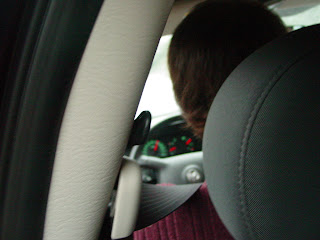understanding a junk food junkie . . .
 Mmm . . . mmm . . . good!
Mmm . . . mmm . . . good!
There's an interesting article from Scientific American that helps explain the current understanding of compulsive eating and its relation to drug abuse.
Basically, both types of behaviors activate the same brain circuitry in similar ways. The circuitry involved are neuronal networks that once evolved for the purpose of rewarding behaviors that were essential for the survival of our species (sex, finding/eating food, etc.) We essentially get rewarded for eating food (pleasure from taste), but at the same time we are conditioned with the various cues that preceded the pleasure (what the food looked like, the smell and where we found it), so that when we encounter those same cues again we expect the same pleasure, which, in turn, should make us more likely to eat the viand again."if the behavior necessary to seek a pleasurable experience was triggered exclusively by the object, the conditioned response would be very ineffective indeed; think about the need to find food to survive, for example: say we are primitive creatures in the jungle and you by pure chance taste a banana. The banana tastes good, but if you were just conditioned to remember that it tasted good—and not to the smell, the shape, the color, or the location of the banana—your ability to find it again would be impaired. Once you create this conditioned memory, though, it’s just like Pavlov’s dogs; the response becomes a reflex. This conditioned response underlies both the drive in drug addiction and the drive in compulsive eating."
In neuroimaging studies scientists have found that people display an increased level of dopamine in their striatum (brain area associated with reward and motivational responses) after just seeing and smelling their favorite food. The article also explains that this is the same thing that happens when drug addicts watch videos of people taking their drug of choice! At that high-calorie foods are more reinforcing than low-fat, low-calorie foods, which makes sense because as hunter-gatherers food was not always abundant. Eating high-calorie foods would be advantageous, because that contain more energy. But most of us don't live in hunting and gathering societies anymore:"Our genes have changed little, but in our environment, we are now surrounded by high-fat, high-sugar foods. And this abundance is undoubtedly a major factor contributing to the rise in obesity Conditioning responses are incredibly powerful with food: when I go past a vending machine and I see chocolates I like very much, I desire the chocolate even though I’m not hungry. But if those chocolates weren’t there, it would be the last thing on my mind."
Such research adds additional insight into treatments for obesity and compulsive eating. One area that I find interesting is the use of biofeedback for treating over-eating:"Yet another exciting area NIDA is researching is the use of functional magnetic resonance imaging (or fMRI) in biofeedback to train people to exercise specific parts of their brains, just like muscles. Sean Mackey of Stanford University, neuroscientist Christopher De Charms of Omneuron [in SanFrancisco] and their colleagues have similarly trained healthy subjects and chronic-pain sufferers to control their brain activity to actually modulate their experience of pain. So NIDA is exploring the possibility that you might use this kind of biofeedback to train people to control a region of the brain called the insula, which has been implicated in food and drug cravings. Smokers who have a lesion in the insula after a stroke, for instance, seem to lose the desire to smoke."
Pretty cool stuff. Well, anyways, check out the rest of the article!



No comments:
Post a Comment